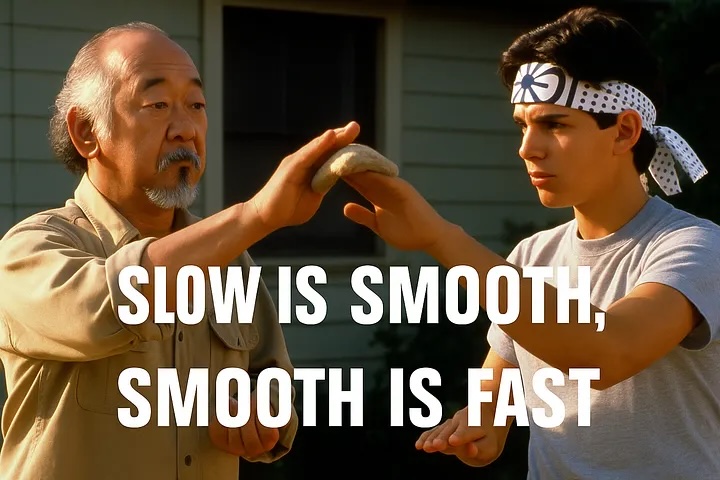Slow Is Smooth, Smooth Is FAST: Rethinking the Next Wave of Streaming
In an age of infinite content and zero patience, everything feels like it’s moving faster — shorter videos, tighter loops, faster scrolls, autoplay defaults. But ask anyone trying to build something that lasts, and you’ll hear a different mantra:
Slow is smooth. Smooth is FAST.
It’s an old military adage that’s found its way into everything from software engineering to special forces. The idea is simple: move deliberately, reduce friction, and you’ll actually move faster over time. Because speed without control just creates chaos.
Streaming is due for a similar rethink.
The Illusion of Speed
We’ve mistaken volume for velocity. The biggest streaming platforms are built on quantity — firehoses of content dumped all at once, infinite scrolls powered by opaque algorithms, creators racing to stay relevant before they fall off the edge of the feed.
The result?
We have access to more content than ever, and somehow it’s harder than ever to find something to watch.
Discovery is broken. Personalization is shallow. Most sessions start with scrolling, not watching. And when something finally plays, it often feels like background noise — forgettable, disposable, and one click away from being replaced.
The current system is optimized for platform metrics, not audience connection.
What If Slower Was Better?
Now imagine a different approach.
Instead of surfacing whatever the algorithm thinks might get a click, what if streaming was designed to feel intentional? Not slower in performance — but slower in spirit. Less chaos. More rhythm.
Think channels — not just categories. Flow — not just frictionless choice. A mood, a vibe, a moment that unfolds without you having to search for it.
Curation over chaos.
Programming over dumping.
Not old-school appointment TV, but something more ambient. A sense of there’s always something good on — without the pressure to decide what that is every time you sit down.
This is not nostalgia. It’s evolution.
Smooth Is FAST
Paradoxically, this kind of slow-burn design creates a faster-feeling experience.
You don’t scroll endlessly looking for something to watch. You don’t bounce between apps. You don’t waste time in search of a vibe.
You turn it on, and you’re in.
That’s the magic of “smooth.” It’s not about being minimal. It’s about being intentional. The experience is seamless, coherent, familiar. Like slipping into a great playlist, or joining a conversation already in progress.
It’s fast — not in how quickly you can skip ahead — but in how little effort it takes to settle in and stay.
And for younger viewers, who are digital natives but not cable natives, that kind of ease is everything.
Why This Matters Now
The next generation doesn’t just watch content — they share it. They co-watch, react, remix. They discover through creators, not channels. But they still want something bigger than a vertical video on their phone.
They want mood. They want connection. They want to feel like they’ve landed somewhere that gets them.
But today’s streaming platforms weren’t built with them in mind. The interface, the programming logic, the business model — it’s all a carryover from an era that treated viewers like subscribers, not participants.
What comes next won’t be a faster algorithm. It’ll be a smarter approach. One that blends the curation of TV, the personality of creators, and the fluid UX of digital into something that feels native to now.
The Next Wave
The playbook isn’t speed. It’s signal. It’s letting go of the race to flood the zone, and instead doubling down on clarity, tone, rhythm.
Streaming doesn’t need more content. It needs more context.
Because when you build it right — when the vibe is clear, the experience is smooth, the path is intentional — what feels slow at first quickly becomes second nature.
And suddenly, you’re not just moving faster. You’re building something that lasts.
